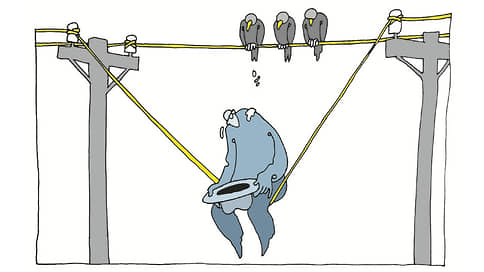Wholesale electricity prices in the south of the Russian Federation are growing faster than in other regions
[ad_1]

Wholesale electricity prices in the south of the country are growing faster than in other regions. In January, the figure increased by 9% compared to December. Among the reasons is growing domestic demand, including in new constituent entities of the Russian Federation that became part of the southern energy system last year, as well as a decrease in the load on renewable energy sources, nuclear power plants and thermal power plants. Regulators remind that in the southwest of the power grid the construction of new generation is required to cover the projected energy deficit of about 1 GW by 2029.
Wholesale prices for electricity in the United Energy System (IPS) of the South have begun to grow noticeably since the beginning of this year, as follows from data from the Trading System Administrator (ATS, the structure of the Market Council – the regulator of energy markets). Since the beginning of January, the weighted average day-ahead market index (DAM, the main sector of electricity trading) in the UES of the South has grown by 9% (plus 182 rubles) compared to December, exceeding 2 thousand rubles. for 1 MWh, calculated by the analytical company SCM Market Predictor. The increase in the indicator in the UES of the South in January was the largest among all energy systems of the UES of Russia, they noted.
Among the reasons for the increase in prices in January is an increase in consumption in the IPS of the South by approximately 3% compared to December due to a decrease in air temperature by 4°C, as well as a reduction in the supply of thermal power plants, nuclear power plants and renewable energy sources, say SCM Market Predictor. These factors led to an increase in the flow of electricity along the Volgogradskoye to IPS South section (flow from the Volgograd region to the Rostov region and to the Kuban) and to its blocking for 78 hours in January. Under conditions of blocking of this and other sections in the IPS of the South, prices exceeding 4 thousand rubles were observed. for 1 MWh, the company added.
Since last year, new constituent entities of the Russian Federation have been included in the IPS of the South, which increases demand within the new boundaries of the southern energy system. In particular, regulators in 2023 reported an increase in flows to the Zaporozhye and Kherson regions. Thus, in the summer, against the backdrop of abnormal heat and after the destruction of the Kakhovskaya hydroelectric station, sharp price spikes were observed on the DAM market. However, according to Kommersant’s estimates, in January 2024 there were already six days when the maximum price at the auction was above 4 thousand rubles, while for the entire 2023 there were ten such days.
The Market Council told Kommersant that the relatively high level of the DAM index in the UES of the South in January 2024 was due to a reduction in supply in the energy system: a reduction in wind power generation and a maintenance reduction in nuclear power generation, as well as an increased impact of network restrictions with an increase in flow in the direction adjacent power systems. Rosenergoatom (part of Rosatom) told Kommersant that from January 11 to 14, power was reduced at the third power unit (1 GW) of the Rostov NPP to eliminate an equipment malfunction in the cooling tower, and on January 26, the fourth unit will be put into scheduled maintenance mode repair. One of Kommersant’s sources claims that in January there was an increase in exports to Georgia.
The System Operator (SO, energy system dispatcher) told Kommersant that over the 28 days of January, relative to the same period last year, the output of nuclear power plants and hydroelectric power plants in the region increased, the output of thermal power plants remained virtually unchanged, and the production of renewable energy sources “decreased slightly relative to the total volume generation in the energy system.” The average monthly volume of unscheduled repairs in the IPS South since the beginning of the year is 1 GW lower than in the same period in 2023, the CO added.
At the same time, the CO recalled that in the southwestern energy region of the UES of the South, the construction of new generation is required “taking into account the projected growth in consumption and the depletion of network infrastructure capacity reserves.” The Ministry of Energy expects to hold a corresponding competition this summer. The preliminary deficit by 2029 will be 857 MW. New power plants may be needed in Crimea and the Krasnodar Territory. Potentially, the deficit could increase to 1.29 GW, since Inter RAO announced its desire to close the power units of the Sochi Thermal Power Plant (160 MW) on the SGT-700 turbine (Siemens) and the Dzhubginskaya Thermal Power Plant (198 MW) on the LMS100PB (GE).
Spot prices in the UES of the South are traditionally higher than the average price of the first price zone by 20–30%, according to the Center for Economic Forecasting of Gazprombank. In recent days, this difference has been greater, the center’s experts admit, but it is still difficult to call the situation “out of the ordinary.”
[ad_2]
Source link





